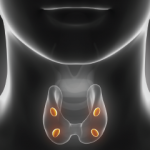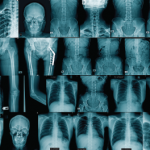(Reuters Health)—Some adults in the U.S. who use supplements to get their daily requirement of calcium are taking higher doses than necessary, a recent study suggests. Researchers examined nationally representative survey data on dietary habits and vitamin and supplement use collected between 1999 and 2014 from 42,038 adults. About one in 20 adults got a…
Search results for: osteoporosis
Abaloparatide Appears Safe, Effective for Boosting BMD in Women 80 & Up
NEW YORK (Reuters Health)—Abaloparatide appears to be a safe and effective drug for increasing bone mineral density (BMD) in women 80 and older, new research shows. The study is a post hoc analysis of the Abaloparatide Comparator Trial in Vertebral Endpoints (ACTIVE) trial, which found patients who received abaloparatide subcutaneously for 18 months had increased…

Rheumatology Research Foundation Welcomes New President, VP
The Rheumatology Research Foundation has appointed Abby G. Abelson, MD, with the Cleveland Clinic to serve as president. She begins a two-year term alongside the new vice president, S. Louis Bridges Jr., MD, PhD, with the University of Alabama at Birmingham (UAB). Drs. Abelson and Bridges are highly accomplished leaders in the field of rheumatology…

A Parathyroid Hormone Both Builds & Destroys Bone
SAN DIEGO—A hormone secreted by the parathyroid gland is both a builder and a destroyer of bone in humans, with important implications for a variety of conditions treated by rheumatologists. In the Oscar Gluck, MD, Memorial Lecture at the 2017 ACR/ARHP Annual Meeting Nov. 3–8, Henry Kronenberg, MD, chief of the Endocrine Division at Massachusetts…

The FDA Approved Several New Rheumatology Drugs in 2017
SAN DIEGO—In a session at the 2017 ACR/ARHP Annual Meeting, Kam Nola, PharmD, MS, professor in the College of Pharmacy and vice chair in the Department of Pharmacy Practice at Lipscomb University in Nashville, Tenn., updated participants on new medications and new indications for rheumatology treatments and safety labeling changes approved by the U.S. Food…
Healthy Diet Linked to Lower Hip Fracture Risk in U.S. Women
(Reuters Health)—Eating an overall healthy diet is tied to a lower risk of hip fracture among women over age 50, a U.S. study suggests. Researchers analyzed decades’ worth of dietary and health data for more than 100,000 U.S. men and women. They found that women who scored highest on the American Healthy Eating Index-2010 (AHEI)…

The Why & What of the ACR’s Clinical Practice Guidelines
With the support of its membership, the ACR publishes clinical practice guidelines in multiple disease areas based on the best available clinical and scientific data. These aim to support health professionals treating rheumatology patients to give the best possible care. Like any set of medical guidelines, ACR guidelines are based on evidence of several different…

3 Experts Discuss Bone Health
SAN DIEGO—At the 2017 ACR/ARHP Annual Meeting Nov. 3–8, experts discussed improving bone health in the U.S., gave tips on bone health disorders in pediatrics and reviewed new translational science findings for joint conservation in early osteonecrosis. E. Michael Lewiecki, MD, director of the New Mexico Clinical Research & Osteoporosis Center in Albuquerque, N.M., called…
Rheumatologist Shortage Looms Amid Surging Patient Demand
(Reuters Health)—A growing number of patients are seeking care from rheumatologists for chronic health problems like arthritis, back pain and osteoporosis, just as the supply of specialists is shrinking, two new studies suggest. An estimated 6,013 clinicians in the U.S. specialized in rheumatology as of 2015, the equivalent of 5,415 full-time providers, according to one…
Baseline Bone Measures Predict Risk of Fragility Fracture in Postmenopausal
NEW YORK (Reuters Health)—Baseline measures of bone density, microarchitecture and strength predict the risk of fragility fractures in postmenopausal women, according to results from the Calgary CaMOS cohort. Changes in bone health were not associated with fracture risk, however, said Dr. Lauren A. Burt from the University of Calgary, Canada, who worked on the study….
- « Previous Page
- 1
- …
- 26
- 27
- 28
- 29
- 30
- …
- 59
- Next Page »